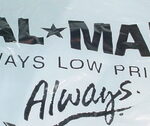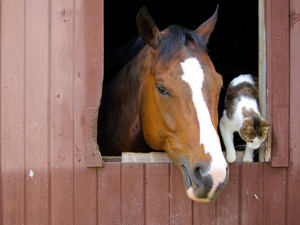Setting up an at-home photography studio can be accomplished with your existing photography equipment, the addition of some light-control devices, and adding a selection of backdrops that your clients can select from if you intend to partake in portrait photography. Running a small photography studio out of your home can be a lucrative side business depending on how well established you are in your community. If the only other portrait studio around is at your local Wal-Mart, chances are good that you’ll be able to put together business from your local high school taking senior portraits, do portrait and family photography, and eventually work you way up to wedding photography.
If you intend to work from your home as a professional photographer, even part-time, you’ll have to have a space set aside to do the work. Your garage is as good a space as any, providing plenty of open space to photograph your customers in a variety of poses. Using your garage also allows you to use relatively large props when a photograph calls for it. The garage door allows you to easily load and unload these props into your studio. One thing you don’t want to be visible in your studio, however, is all of your tools and assorted junk, such as lawn mowers, weed whackers, and that Christmas tree stuffed in a corner. Even if you intend to practice part-time, it’s a good idea to clear out the garage so that you present a professional, well-laid out area in which to work. After all, appearances in photography are everything.
Begin by cleaning out the entire garage of all the excess junk and tools that have accumulated. You’ll want to have bare walls and a bare floor. The overhead track for the garage door opener can be compensated for, so don’t put too much concern into that. You’ll want to paint the walls of the garage a dark color. This will help you to control the light in the room more easily. Use a mat-color paint to avoid reflections of light or consider covering the wall with black fabric. Cover the ceiling with the same black fabric. You won’t want to paint the ceiling black, as this could affect the sellability of the home if you ever intend to sell it. In one corner of the garage, set up a small room in which your subjects can change outfits when necessary in privacy. Include in the room a chair, a shelf, and a full-length mirror, as well as ample lighting with which ladies may fix their makeup. The room should be approximately five feet square, just enough room for two when necessary.
Cover the floor of the garage with dark carpeting, and keep it swept. Over time, it will begin to collect things like glitter and pieces of costumes that people choose to wear for their portraits.
Have a selection of chairs, stools and benches, as well as a couch, that can be moved into position to take pictures with.
Set up your light deflectors and reflectors in the corners of the room, and take a number of test photographs before you have a client sit for pictures to determine any changes that need to be done in order to redirect light.
Set up at least two tripods, with a six-foot table nearby where you can keep your computer. This will allow the subject of your photographs to see how the poses look while the pictures are being taken. This will ensure that they have at least some part to play in the poses they want, and will allow you to fine-tune the session specifically to their tastes with far less waste.
Setting up the studio itself can be hard work, but in the end, the more time and effort you put into it, the more likely it is that you’ll be pleased with the result, as will your customers.




